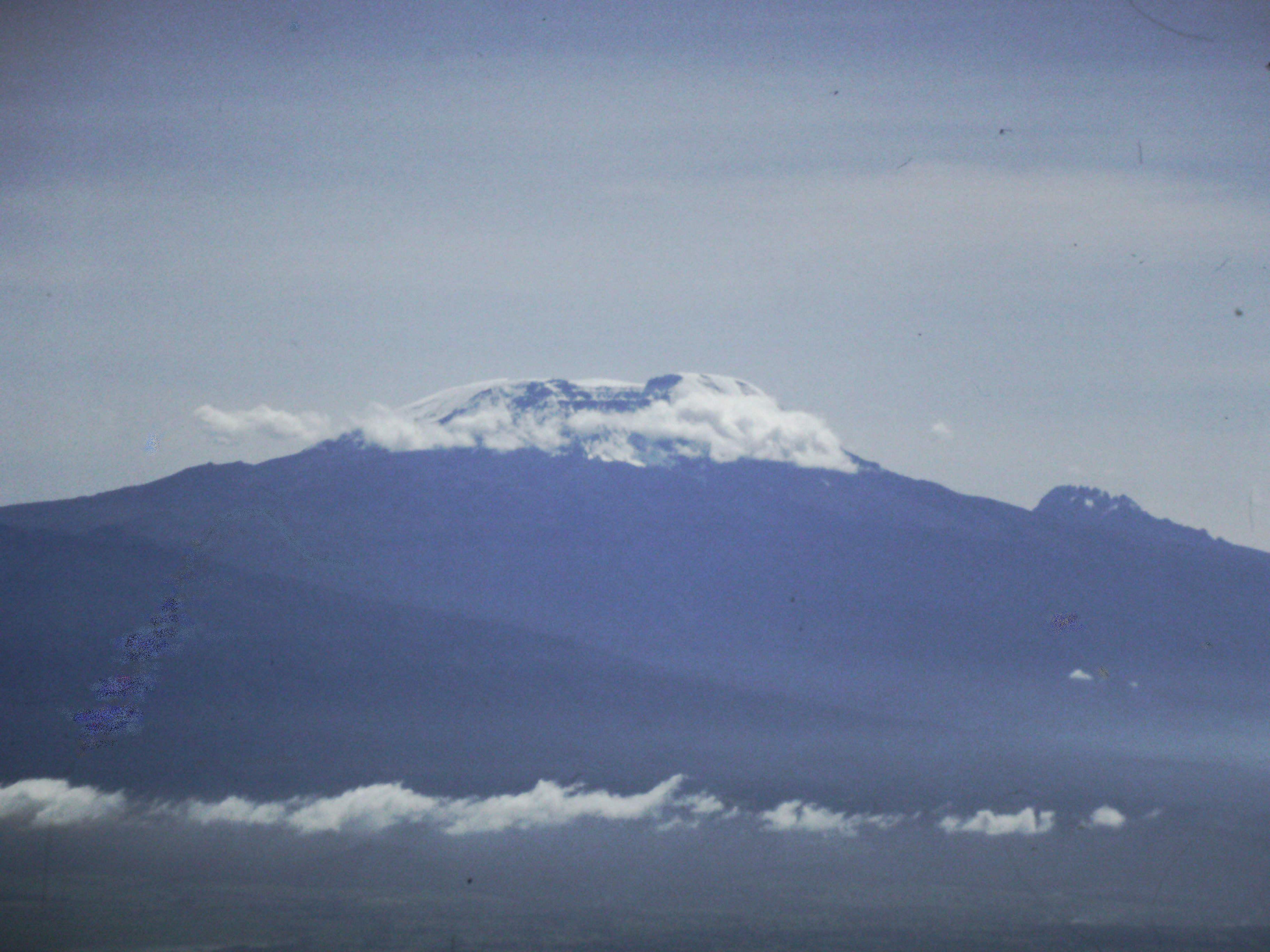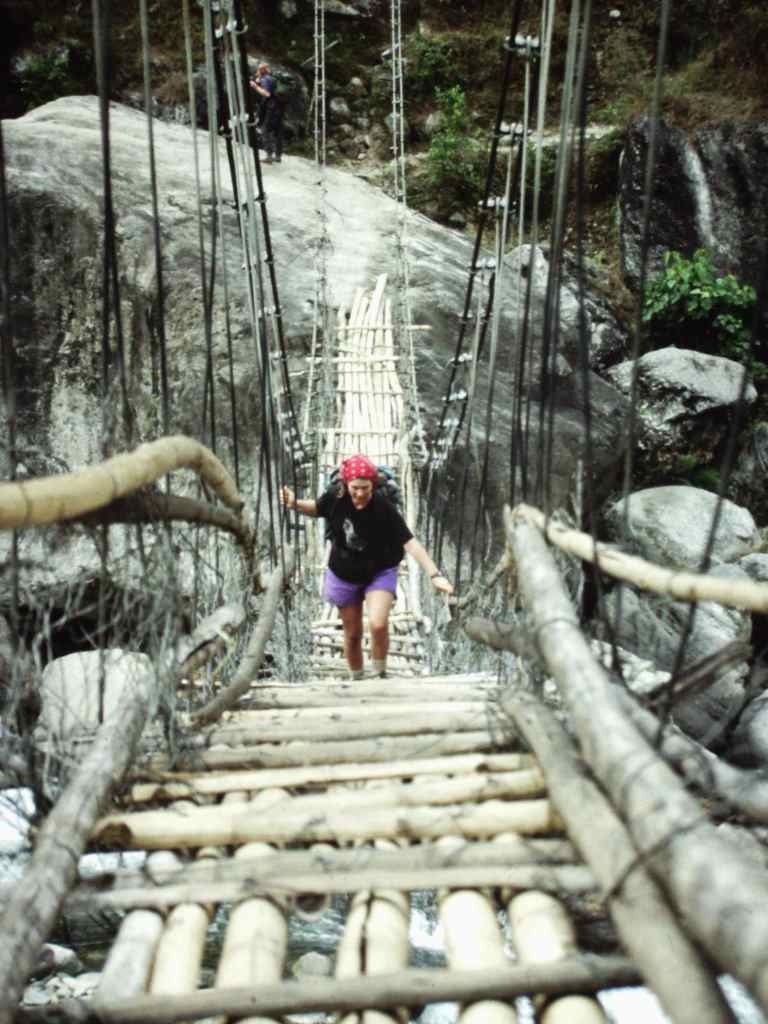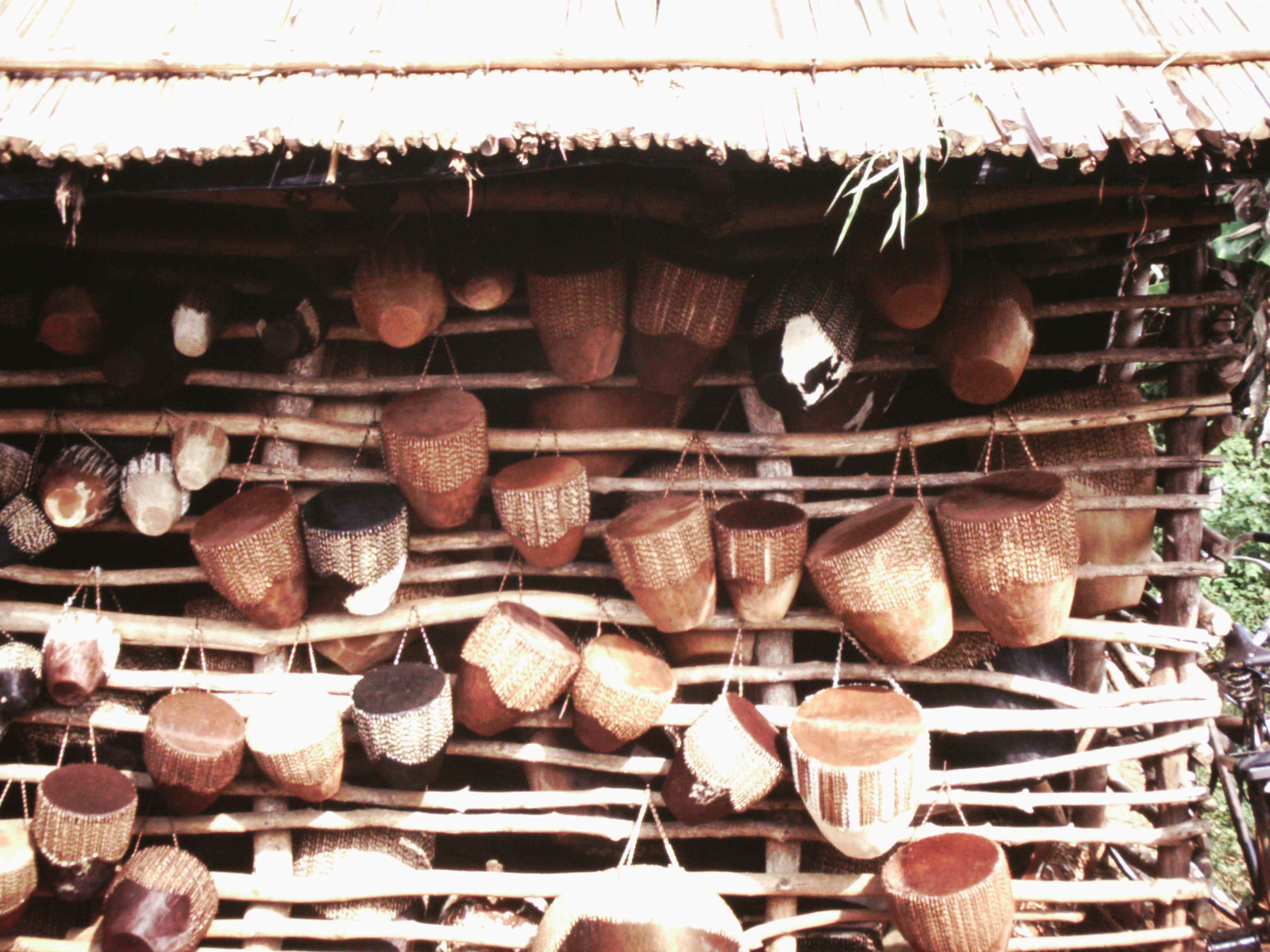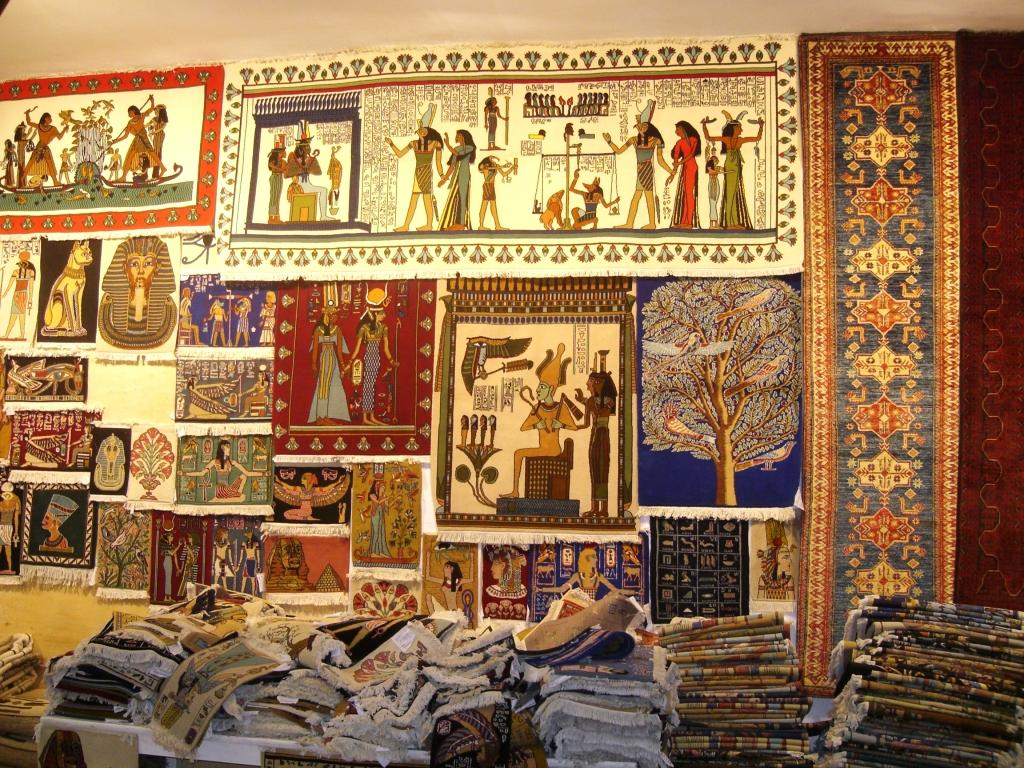You want to climb Kilimanjaro, probably for the same reason I did. At 19,340 feet, Kilimanjaro is Africa’s highest peak, which means that it’s one of the so-called “seven summits” — the highest peak on each continent. Talk about cachet! But I will tell you right up front that it’s not the most dramatically scenic mountain in East Africa: That honor goes, hands down, to Mt. Kenya, over the border and north of Nairobi.
Still, chances are that if you’re an outdoorsperson and you like mountains and you are in East Africa, at some point you’re going to look up there and decide that you have to touch the snows of Kilimanjaro for yourself.
In Your Bucket Because…
- It’s one of the “seven summits” (highest points on each continent) that is accessible for non-professional-mountaineers.
- Watching dawn break over the African plains is a once-in-a-lifetime view.
- If you’ve never climbed an equatorial mountain, you’ll be surprised at the weird vegetation and dramatic landscapes that are created when the tropical meets the alpine.
- Good for adventure travelers and fit hikers.
Here’s som good news: As climbs to many thousands of feet are concerned, Kili is an easy one — a “walk-up” -– meaning that technical mountaineering skills and gear aren’t required to climb it. Quite simply, anyone in good shape who can keep putting one foot in front of the other for a very long way can make it to the rooftop of Africa. Unless, that is, a climber falls victim to altitude sickness, otherwise called acute mountain sickness or A.M.S.
The problem with Kilimanjaro is that it is possible to climb it faster than most humans can acclimate to the change in elevation. This is particularly true on the Marengu Route (also called the “tourist route” because it is most popular with tourists; it’s also called the “Coca Cola Route,” and it’s the only route with sleeping shelters). It is even more true if you take the quickest tour up (five days, four nights). The failure rate is high, and of those who do exceed, most become sick on the mountain.
Beginning climbers have no way of knowing how they will fare at high elevations. Even experienced climbers can be surprised: Mountain sickness can be fickle, and a person who has climbed to 19,000 feet with no problems before may encounter trouble the second time around, which is why I found myself wondering, as I huffed and puffed up to the final campsite at 15,000 feet, how I would fare on that last day, with another 4,000 feet straight up to go.
Avoiding Altitude Sickness
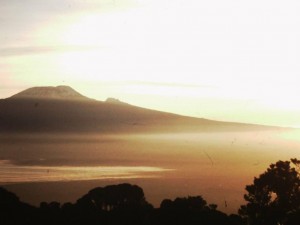
There are seven routes on Kilimanjaro. By far the two most popular are the Marangu and the Machame. We had selected the Machame route for a few reasons, chief among them that it is considered more scenic, with a traverse of the Shira plateau and dramatic views of outcroppings, glaciers, and the summit. We’d be able to choose our own campsites, rather than share shelters with hordes of others. Our guides joked that it was called the “whiskey route” because that’s what they needed to drink when they tackled it, but the fact is that while the Machame route may be longer and steeper, it gives hikers at least an extra day to acclimate. Altitude sickness is best prevented by slow acclimitization, so we also planned a zero mile day at a campsite at around the 12,000 foot level, and slow short days for the rest of the climb. This is a turtle’s race. The hare doesn’t stand a chance.
We had also climbed some other East African mountains first, which is where Mt. Kenya can come in, if you can swing the logistics. At 16,300 feet, Point Lenana (Mt. Kenya’s non-technical “trekkers” peak; its other two, higher peaks require technical mountaineering skills), can help get your body ready for Kili, and its craggy cliffs and plummeting gorges are among the most dramatic mountain scenery in the world. Another option is to climb Mt. Meru, just across the plains near Arusha, and visible from Kilimanjaro. At 14, 943 feet, it’s a world-class trip in its own right.
Don’t have the time to tackle another mountain first, it’s always a good idea to choose a slower paced climb. Most tour companies can tack on extra days, although of course, it’ll cost more. Finally, there is the prescription drug Diamox, which can prevent altitude sickness if taken before the onset of symptoms. (It does not cure altitude sickness once symptoms set in; only descending can do that.) Discuss this option with a doctor.
The Machame Route
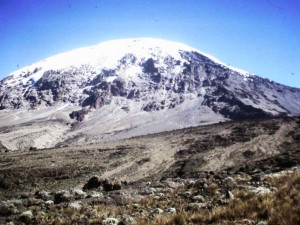
The Machame route has some steep sections, and some of them come right at the beginning as you climb through the bamboo forests and heath up to the Shira Plateau. There, the landscape opens up, and you leave the forest for open alpine desert, where a long flattish traverse leads through the weird and wonderful zone of Afro-alpine vegetation — giant senecio and lobelia, which look like they were conceived by Dr. Seuss (and indeed, are said to have inspired illustrations in some of his books). We took our time on the Shira, camping and resting, and by the time we reached the rock and snow zone at our campsite at 15,000 feet, we were well acclimated. The air was thin and sharp and bright as a blade.
Finally, the climb itself. Up till now, it was all rehearsal, but now, we had reached 15,000 feet with 4,000 to go, most of it on snow. Morning came too early, with a 2 a.m. wake-up call from a cautious guide who wasn’t altogether convinced that our middle-aged quartet could make it up the final 4,000 feet without a couple of extra hours. He was wrong though. Were fit, and we had taken our time and acclimated well. The final push to the summit ridge was no problem; indeed, the climb was a pleasure.
I started up the snow slope, putting on instep crampons to help with traction. Rest-step, breathe, rest-step, breathe. It was dark, and although the moonlight snow magnified the moonlight, most of what I could see was just the slope just ahead of me. Up and up. My world shrank to comprise nothing more than the rhythm of upward motion. And then, in no time at all, I reached the crater rim. I knew I had gotten there only because the uphill simply stopped. I was shocked: it seemed far too early, and I thought it must be a false summit, but no, we were at on the crater and it was still pitch black. The actual high point was still about half an hour farther around. We got there in a fierce wind, long before dawn. It was too cold to wait. We turned back and as we started the descent, we caught the first rays of sun rise reddening the African plains.
Practicalities
Kilimanjaro is a national park, and the rule is, you must climb with licensed guides. The vast majority of climbers also take porters, who will set up your tents, prepare your food, and carry your gear. The minimum cost for a trek depends on the company, whether you book it in the US or once in Tanzania, the route, and the number of days, but figure a minimum of $200 – $250 a day per person for a basic locally-booked trek, plus tips, which the guides will make it absolutely clear that they and the porters expect. A trip booked through a western company can cost double. (If you book locally, be sure to solicit recommendations from people you trust. Actually, the same advice goes for any booking.) Note that while what you are paying may seem like a lot, not much of it goes to the porters. — much of what you pay goes to fees and permits. Like waiters in the U.S., they depend on tips to make their livings. The hustle for tips toward the end of the trip isn’t pleasant for anyone, but it’s part of the experience.
This article is updated from a story published in 2012.
